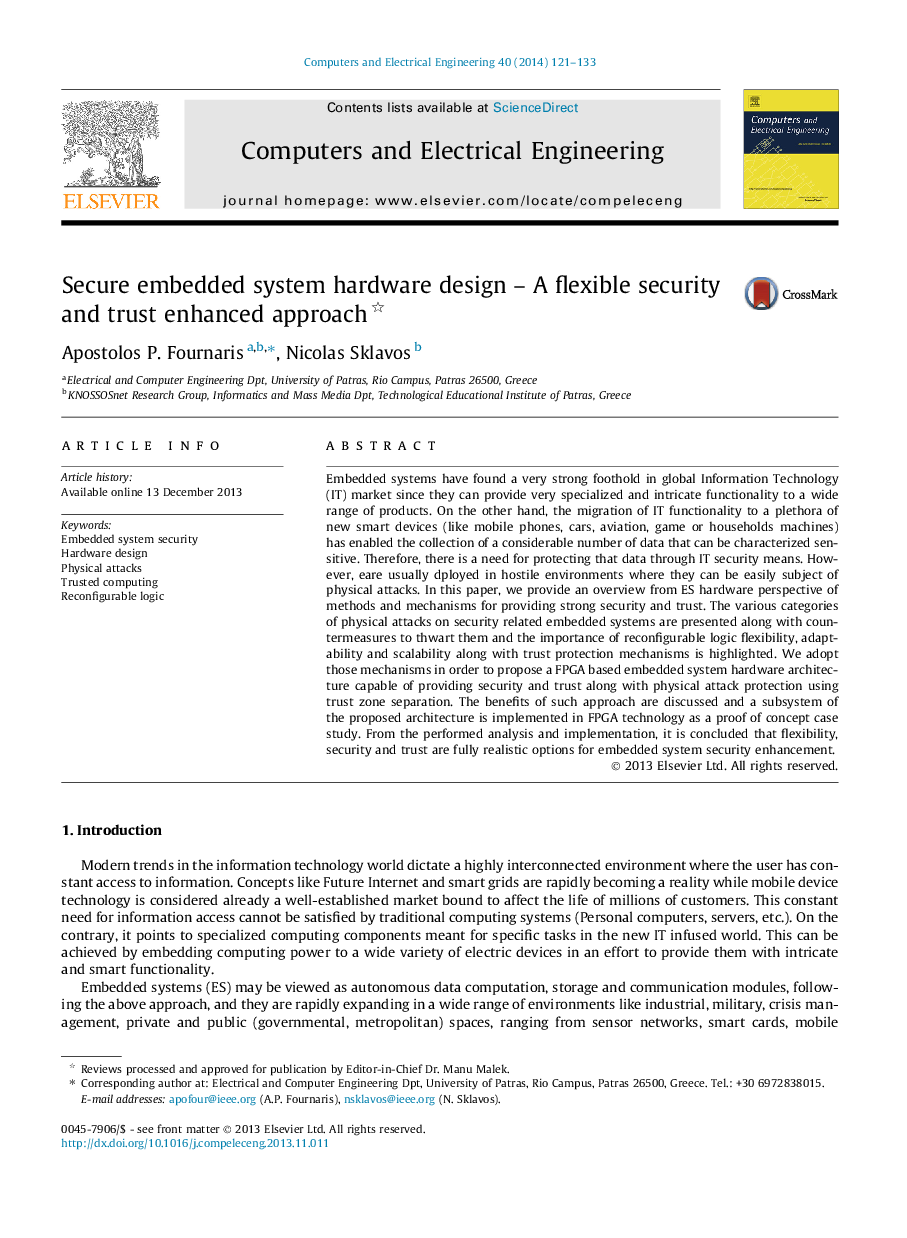| Article ID | Journal | Published Year | Pages | File Type |
|---|---|---|---|---|
| 453734 | Computers & Electrical Engineering | 2014 | 13 Pages |
•Methods for enhancing security in embedded systems are discussed.•An overview of physical attacks and their countermeasures is made.•Embedded system trust establishment approaches are discussed.•An FPGA based flexible security and trust design methodology is proposed.•Asymmetric cryptography primitive embedded system platform case study is described.
Embedded systems have found a very strong foothold in global Information Technology (IT) market since they can provide very specialized and intricate functionality to a wide range of products. On the other hand, the migration of IT functionality to a plethora of new smart devices (like mobile phones, cars, aviation, game or households machines) has enabled the collection of a considerable number of data that can be characterized sensitive. Therefore, there is a need for protecting that data through IT security means. However, eare usually dployed in hostile environments where they can be easily subject of physical attacks. In this paper, we provide an overview from ES hardware perspective of methods and mechanisms for providing strong security and trust. The various categories of physical attacks on security related embedded systems are presented along with countermeasures to thwart them and the importance of reconfigurable logic flexibility, adaptability and scalability along with trust protection mechanisms is highlighted. We adopt those mechanisms in order to propose a FPGA based embedded system hardware architecture capable of providing security and trust along with physical attack protection using trust zone separation. The benefits of such approach are discussed and a subsystem of the proposed architecture is implemented in FPGA technology as a proof of concept case study. From the performed analysis and implementation, it is concluded that flexibility, security and trust are fully realistic options for embedded system security enhancement.
Graphical AbstractFigure optionsDownload full-size imageDownload as PowerPoint slide
